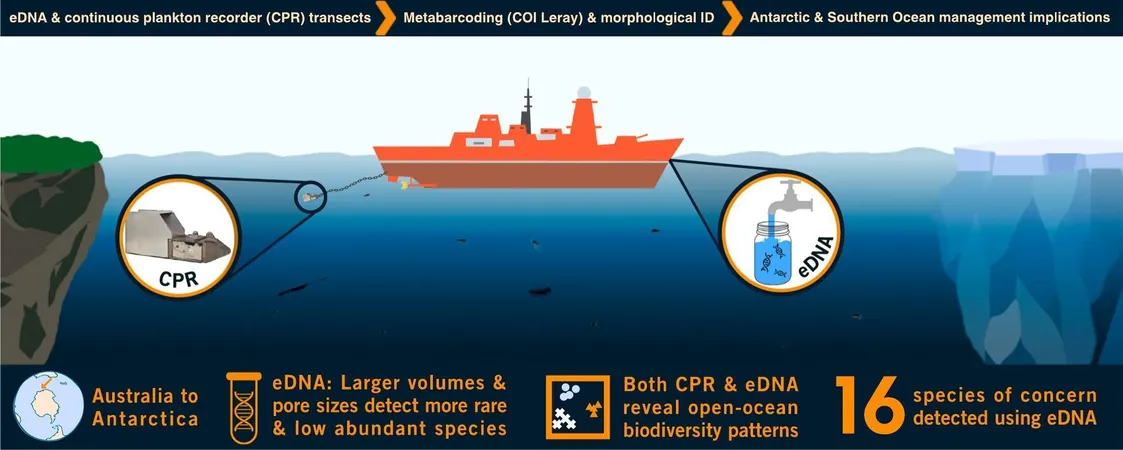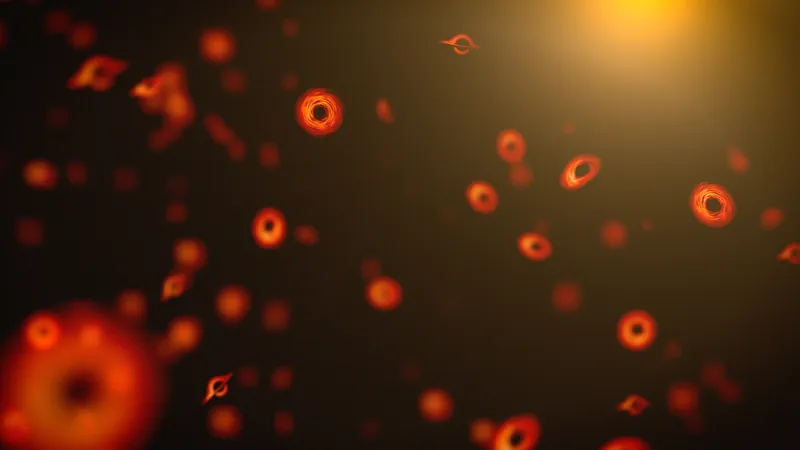
Revolutionizing Marine Monitoring: DNA Technology Unveils Threats to Antarctic Ecosystems
2024-09-30
Introduction
Groundbreaking developments in DNA technology are set to revolutionize the way we monitor marine life and detect threatening non-native species in the Southern Ocean, particularly close to the icy shores of Antarctica.
Research Expedition
In an extensive 3,000 nautical mile expedition aboard the Australian icebreaker Aurora Australis in 2019, researchers conducted critical analysis by collecting 138 seawater samples to investigate “environmental DNA” (eDNA). This innovative method allows scientists to detect which microscopic zooplankton species were present at the time of sampling, providing invaluable insights into marine biodiversity.
Combining Methods
Dr. Leonie Suter, a molecular geneticist with the Australian Antarctic Division, explained that the research team compared the findings from eDNA to traditional methods using a Continuous Plankton Recorder (CPR). This device, towed behind the ship, captures zooplankton between two fine sheets of silk.
"We examine these collected organisms under the microscope for identification," Dr. Suter elaborated. However, she pointed out a limitation: while the CPR effectively captures robust species like crustaceans, delicate gelatinous organisms often get damaged in the process.
Advantages of eDNA
Enter eDNA, a method that can identify organisms from just minute DNA fragments, including those from feces, eggs, or larvae. Dr. Suter highlighted, "We aimed to evaluate whether eDNA could enhance our understanding alongside traditional CPR data."
Research Findings
The results were striking: the eDNA methodology detected an impressive 68 zooplankton species compared to only 32 species identified through CPR. Shockingly, only 12 species overlapped between the two methods, predominantly crustaceans like krill and copepods.
Need for Integration
Dr. Georgia Nester, who led the research team (now at Mindaroo Foundation), emphasized the importance of integrating both tools. "The combination broadens our perspective on zooplankton diversity and ongoing changes. Without this comprehensive approach, we risk overlooking critical shifts, especially among organisms that might thrive in warming ocean temperatures," she explained.
Non-native Species Detection
Moreover, during the voyage, eDNA analysis revealed 16 non-native or potentially invasive species, with the majority detected near Tasmania. Intriguingly, some detections rose significantly as the team entered sea ice regions, highlighting how species like hull biofouling organisms could be inadvertently transported.
Biosecurity Measures
Australian Antarctic Division's Environmental Manager, Kirsten Leggett, commented on the heightened biosecurity measures enacted on Australia’s newest icebreaker, the RSV Nuyina. The ship is equipped with a biofouling management plan conforming to international guidelines to mitigate risks of foreign species introductions into Antarctica.
"We’re committed to working with relevant authorities to uphold stringent biosecurity standards for the Australian Antarctic Program," Leggett affirmed.
Significance of eDNA
The implications of eDNA extend far beyond simple monitoring; it heralds a novel approach to tracking biosecurity risks in vulnerable ecosystems. Dr. Suter insists, "To safeguard Antarctic environments against non-native species invasions, we must prioritize timely detection strategies using eDNA. When coupled with CPR surveys and biophysical data, we can achieve a sophisticated and nuanced understanding of the Southern Ocean's ecological health."
Conclusion
The research findings were published in the esteemed journal Science of The Total Environment, marking a significant step forward in environmental science and the ongoing fight to protect one of our planet's most fragile ecosystems from the threats posed by climate change and invasive species. Are we prepared to safeguard our last great wilderness? The future of Antarctic ecosystems hangs in the balance!









 Brasil (PT)
Brasil (PT)
 Canada (EN)
Canada (EN)
 Chile (ES)
Chile (ES)
 España (ES)
España (ES)
 France (FR)
France (FR)
 Hong Kong (EN)
Hong Kong (EN)
 Italia (IT)
Italia (IT)
 日本 (JA)
日本 (JA)
 Magyarország (HU)
Magyarország (HU)
 Norge (NO)
Norge (NO)
 Polska (PL)
Polska (PL)
 Schweiz (DE)
Schweiz (DE)
 Singapore (EN)
Singapore (EN)
 Sverige (SV)
Sverige (SV)
 Suomi (FI)
Suomi (FI)
 Türkiye (TR)
Türkiye (TR)